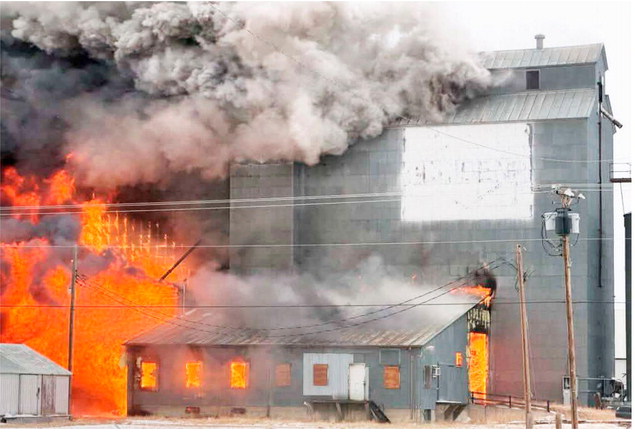Poll Finds Support For New BLM Oil, Gas Rules
A poll commissioned by the Montana Wildlife Federation in July and released this week found broad support for parts of a Bureau of Land Management oil and gas rule released earlier this year that Montana’s Republican federal delegation is seeking to block from taking effect.
The poll was conducted by Republican-leaning firm New Bridge Strategy July 15-21 and surveyed 500 registered Montana voters via landlines and cell phones and focused on questions about how oil and gas development interacts with public lands and conservation under the rule finalized this past April.
The poll shows that despite opposition to the rule from U.S. Sen. Steve Daines, Rep. Ryan Zinke, and Rep. Matt Rosendale, a vast majority of the Montana public supports key facets of the rule, which is aimed at mitigating environmental degradation and keeping oil and gas companies honest when leasing federal public lands for development.
The rule is separate from, but works in conjunction with, another rule released this spring that puts conservation on equal footing with other public land uses.
“Montanans have made it clear that they value responsible energy development that also protects our public lands and wildlife habitats,” Montana Wildlife Federation Executive Director Frank Szollosi said in a statement.
The BLM’s Fluid Mineral Leases and Leasing Processes rule updated bonding requirements, royalty rates, and minimum bids for the first time in more than 35 years, pushing oil and gas leasing on federal lands to more likely be in place that are most likely to be developed and have existing infrastructure in place.
It updated the minimum bonding requirements for oil and gas companies, bumping them to a minimum of $150,000 instead of $10,000, which the BLM said would ensure companies perform reclamation or that the government can cover those costs if the company does not do so, saving taxpayers money.
It also raises the bid minimums per acre of land leased and increases the amount of rent owed by the companies each year per acre.
Department of Interior Secretary Deb Haaland in April said the changes under the final rule were the most significant oil and gas leasing program reforms in decades and would keep taxpayers from having to bear the costs of orphaned wells and environmental cleanups at oil and gas sites.
“These reforms will help safeguard the health of our public lands and nearby communities for generations to come,” Haaland said at the time.
In May, Republicans in both the U.S. House and Senate introduced resolutions that sought to strike down the Fluid Mineral Leases and Leasing Process rule, which if passed would say that the rule “shall have no force or effect.”
Daines cosponsored the Senate version of the bill along with 11 other Republicans, while Zinke and Rosendale cosponsored the House version, which has nine other cosponsors aside from the two. Neither have passed out of committee hearings so far.
But the polling released this week shows that threeof- four Montanans do not disagree with the rule. According to the poll, those sentiments cross the political spectrum.
Ninety-six percent of people polled said oil and gas companies should have to pay to clean up public lands after they finish drilling. Another 84 percent said they supported the increase in royalty fees companies have to pay, which would put those fees on the same level as what companies pay to the state.
About 77 percent of respondents said putting conservation of some land near rivers and streams, or which hold threatened wildlife, on the same level as oil and gas drilling was something they would support, according to the poll. And about 69 percent said they supported prioritizing oil and gas leasing in areas where the wells are most likely to produce.
All of those things garner broad support among Republicans, independents and Democrats in Montana, according to the poll. Among Republicans, the question about conservation of lands near rivers and streams got 68 percent support, the lowest among all four questions. Among Democrats, they were least likely (46 percent) to support the prioritization of mineral leases in areas where they would likely be most productive.
The poll also asked respondents to side with one of two statements regarding support or opposition for requiring oil and gas companies to pay for cleanup costs once they abandon a site. According to the results, 84 percent of those polled agreed with the one supporting those requirements, which also said companies have left Montana taxpayers on the hook for $180 million in cleanup costs.
About two-thirds of those polled said they supported prioritizing leasing in the areas where more than 1 million acres of federal land in Montana is already tied up by oil and gas development companies.
Overall, according to the poll, 55 percent of Montanans agreed the new rule was “common sense,” including 60 percent of Republicans, 54 percent of Democrats and 52 percent of independents. Nearly three-out-of-four respondents said they agreed with the question: “We can have energy development in Montana while also protecting the most sensitive wildlife habitat, forest, open spaces and streams.”
Only one-third of those polled said providing federal land for oil and gas leases was extremely or very important. But the respondents largely agreed with other priorities. Providing a place for wildlife to live (90 percent), helping to keep air and water clean (90 percent), providing a place to hunt and fish (82 percent), providing a place for recreation (81 percent), providing jobs (70 percent) and providing grazing land (52 percent) were considered either extremely or very important among the survey group.
The survey also asked questions specific to southwest Montanans and energy development, in which three-quarters of respondents said they preferred there be no drilling in the Big Hole and Beaverhead River watersheds to protect the quality of the rivers and the fish that live there. About 40 percent of respondents said protecting the health of those rivers and fish should be a top priority as the BLM considers separate sage grouse habitat rules as well.
“They prioritize the health of those waters first,” the survey memo said. “Even when presented with different viewpoints, they continue to side with those who would prevent new leasing.”
Szollosi said the results show Montanans “stand firmly behind these common-sense reforms.” “BLM’s oil and gas rule ensures that companies are held accountable for cleaning up their messes and that Montana taxpayers receive a fair return from energy development,” Szollosi said.
New Bridge Strategy is one of two firms that partners to conduct the Public Lands Survey from the University of Montana’s Crown of the Continent and Greater Yellowstone Initiative done every two years. The survey released this spring showed among Montanans’ top concerns were how drought, low snowpack and sprawl into open lands was affecting the state.
The margin of error for the statewide poll is 4.3 percent, according to the firm.

